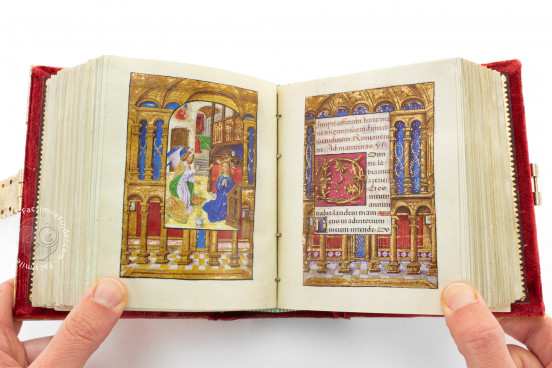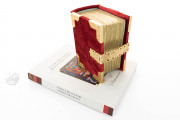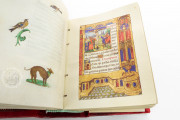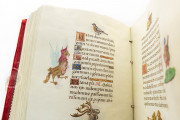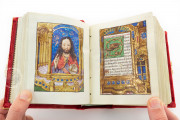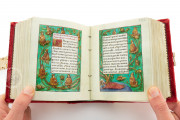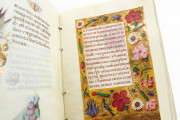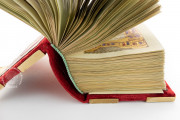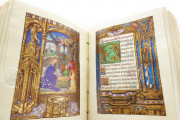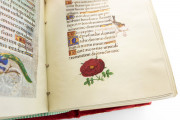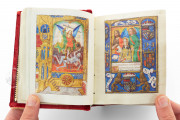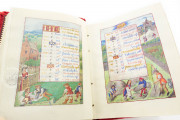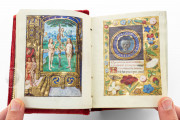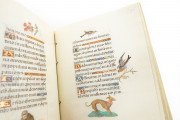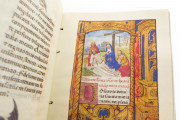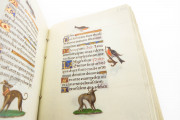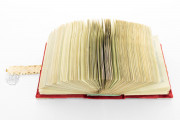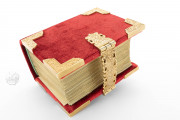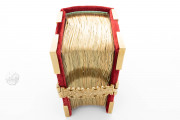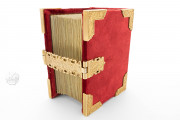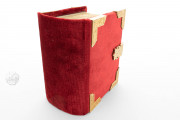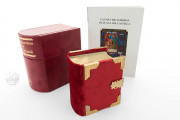A striking world of trompe l'oeil borders and vibrantly colored miniatures unfolds inside the Hours of Joanna of Castile, a Christian prayer book produced in Bruges or Ghent starting in 1496 and completed in 1505 for the Spanish Infanta Joanna I of Castile (1479-1555). Royal piety is on full display in the elaborately illuminated manuscript. The book contains the heraldry of both Joanna and her husband, Philip the Fair (1478-1506), Duke of Burgundy. Also known as the Hours of Joanna the Mad, it is a sumptuous example of fifteenth-century Flemish manuscript illumination. It features twenty-eight full-page miniatures and twenty three-quarter-page miniatures, as well as dozens of painted borders and marginal vignettes.
The codex is a wonderful example of Ghent-Bruges style illumination executed predominantly in 1505 by the Master of the David Scenes in the Grimani Breviary, named for his work in the Grimani Breviary, in 1505, after Joanna ascended to the throne of Castile.
A Myriad of Animals, Birds, and Plants
Richly illuminated with illusionistic architectural borders, the book's decorative program is impressive. Its painted borders include twenty-four historiated calendar borders with scenes of daily life. The margins of the text pages boast images of flora, fauna, pilgrim badges, and precious jewels.
A Very Personal Book
The prayer book includes a distinct combination of texts, including the Office of a Guardian Angel, catechismal texts, a rare prayer to the Virgin Mary, and an extended Office of the Passion of Christ. Two of the miniatures (fols. 176v and 287v) may copy paintings owned by Joanna: a Byzantine icon of the Hodegetria type and a representation of the Virgin and Child by Rogier van der Weyden.
Two portraits of the queen are included, one of which is accompanied in the painted border by the arms, mottos, and joined initials of Joanna and Philip (fol. 26r). The other shows Joanna in prayer—accompanied by Saint John the Evangelist—before the copy of the Rogier van der Weyden painting (fols. 287v-288).
Clearly Articulated Text Presented Sumptuously
The text is written in Gothic Textualis with many features of Gothic Rotunda, as is common in luxury devotional books made in the Netherlands for export in this period. Rubrics, painted line fillers, gold decorative initials with blue and red backgrounds, and larger painted initials clarify the subdivisions of the manuscript's text.
A Velvet Binding
The manuscript is documented in a 1545 inventory of Joanna I of Castile's possessions. It was owned in the nineteenth century by Philip Augustus Hanrott (1776-1856). It passed quickly through the ownership of John Tobin (1763-1851) and his son, also John Tobin, before being purchased from the family of the younger Tobin by the British Museum in 1852. The manuscript holdings of the British Museum were transferred to the British Library in 1973.
The manuscript is currently bound in red velvet with chased silver-gilt corner pieces and clasp and red silk endpapers. It incorporates parts of a nineteenth-century British Museum covering of red Morocco.
We have 1 facsimile edition of the manuscript "Hours of Joanna of Castile": Muy Ricas Horas de Juana I de Castilla facsimile edition, published by Patrimonio Ediciones, 2016
Request Info / Price
